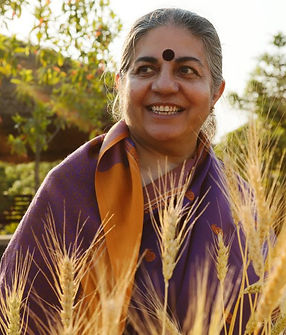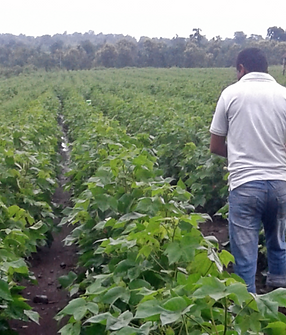Cotton
The story of cotton spans back to the dawn of human civilization, and much like various other domains of human endeavour, the Indian sub-continent has played a significant role in cultivating and processing cotton since ancient times. Apparel utilises 60% of the global cotton production, with European and North American consumers contributing to around 75% of these imports.
India holds the position of the second-largest cotton producer globally and takes the lead as the largest exporter of cotton. The annual production of cotton fabric in India amounts to approximately 6,188,000 tons.
There are ten primary states known for cotton cultivation, which are organised into three zones: the northern zone, central zone, and southern zone.
-
The northern zone comprises Punjab, Haryana, and Rajasthan.
-
The central zone includes Madhya Pradesh, Maharashtra, and Gujarat.
-
The southern zone consists of Andhra Pradesh, Telangana, Karnataka, and Tamil Nadu.
In addition to these ten states, cotton is also grown in Orissa, Uttar Pradesh, West Bengal, and Tripura.
Cotton is classified into three main categories based on fibre length:
-
Long Staple - cultivated in Punjab, Haryana, Maharashtra, Tamil Nadu, Madhya Pradesh, Gujarat, and Andhra Pradesh.
-
Medium Staple - grown in Rajasthan, Punjab, Tamil Nadu, Madhya Pradesh, Uttar Pradesh, Karnataka, and Maharashtra.
-
Short Staple Cotton - produced in Uttar Pradesh, Andhra Pradesh, Rajasthan, Haryana, and Punjab.


Challenges of Cotton Industry in India
There are four primary types of cotton - two from Asia and two from America. The key distinction among them for cotton cloth production lies in their staple length. Traditional Indian cotton has shorter staples compared to American varieties. Presently, the majority of global commercial cotton production originates from Central and South American species. However, historical cotton manufacturing and trade reveal insights into changing global power dynamics.
Cotton was utilised in both India and the Americas during ancient times, with Indian cotton being the first exported to Europe and the Middle East. The Mughal Empire fostered a significant cotton industry, and India saw the development of the first cotton gins. European engagement, particularly with the British, led to a surge in Indian cotton cloth exports, posing a threat to the British wool sector. This prompted Britain to ban Indian textile imports, spurring domestic cotton spinning and weaving. By the late 1800s, Indian cotton manufacturing collapsed, symbolising the impact of British imperialism according to Gandhi.
Simultaneously, the USA's economic ascent led to a thriving American cotton industry. American cotton's advantage lay in its longer staple, making it more durable for weaving and less prone to breakage. As mechanisation advanced, American cotton's benefits grew further, with around 98% of global cotton now originating from long-staple varieties, including genetically modified ones. However, this cotton type necessitates more water, leading to increased irrigation in Indian cotton farming.
Native cotton varieties lacked the necessary fibre length and yield to supply the growing mills. The Central Institute for Cotton Research took on the challenge and successfully developed high-performing Upland hybrids suitable for Indian soils, leading to a significant yield increase by 1997. GM seeds accounted for 95% of cotton farming in India. However, this progress had its costs. The new hybrids were cash crops, focusing less on surviving adverse conditions and more on high yields. They required irrigation, which was problematic in a rain-fed farming landscape where most farmers had limited access to regulated credit.
Farmers turned to moneylenders, incurring high-interest debt, which pushed them to allocate more land to cotton cultivation as it could generate profits to repay loans. This shift from food crops to cotton, though financially driven, left them vulnerable to pest infestations. While American farmers had adopted integrated pest management techniques, Indian farmers, hindered by illiteracy and isolation, resorted to chemical pesticides without proper education on their safe use.
Overuse of pesticides led to the rise of pesticide-resistant pests, like the old world bollworm, causing substantial cotton losses. Additionally, the liberalisation of trade policies following WTO agreements exposed Indian farmers to fluctuating global cotton prices and unfair competition due to subsidies received by advanced countries.
Amidst these challenges, farmer suicides began to make headlines in the mid-1990s, peaking in 2004, even before the introduction of genetically modified (GM) cotton. Despite the difficulties, cotton consumption of pesticides surged, accounting for a disproportionate share of the country's pesticide use.
Farmer Suicide caused by GM Cotton
Farmers are dying because Monsanto is making profits by owning life that it never created but it pretends to create. That is why we need to reclaim the seed. That is why we need to get rid of the G.M.O.s. That is why we need to stop the patenting of life.
—Vandana Shiva, philosopher and environmental activist
In 2002, Bt cotton was introduced in India as the country's inaugural genetically modified (GM) crop. Farmers are compelled to buy new seeds annually, as these are solely available as hybrid varieties from retailers, preventing them from replanting the next season. Bollgard, a product of Mahyco-Monsanto Biotech, is genetically altered with the Bacillus thuringiensis (Bt) gene and a toxin that targets the bollworm, a destructive pest to cotton plants. The cost of Bt seeds can be up to four times higher than traditional counterparts and necessitate irrigation due to rain-fed land in Maharashtra, where about 80% of farmland is non-irrigated. Additionally, more pesticides and fertilisers are required.
Cultivating cotton is a labour-intensive process involving tasks like cleaning, seeding, and transporting water to fields. Each flower must be manually cross-pollinated and harvested. Workers endure health issues from pesticide exposure, extreme heat, and physical strain, often earning meagre wages that fail to alleviate their poverty. Most cotton farmers struggle to cover production costs, let alone generate profits for their families. The heavy use of pesticides is evident in the presence of a cart loaded with these chemicals and a spraying tank for fields. Bollworm resistance to Bt cotton necessitates heightened chemical application, which poses risks to both farmers and the environment, with many of these chemicals banned in Western countries. Despite this, many Indian workers work without proper protective gear.
Since 1995, over 270,000 Indian cotton farmers have tragically taken their own lives. Activists suggest that the proliferation of expensive genetically modified seeds flooding the market contributes to this issue, exacerbating the financial burden on low-income farmers and driving them into insurmountable debt cycles. The deaths have been linked to the introduction of costly GM seeds, fertilisers, and insecticides. Workers earn well below a livable wage, around £65 per month, often resorting to borrowing from loan sharks to cover expenses. Unfortunately, unfavourable weather conditions or fluctuations in global cotton prices can spell disaster for these farmers. Widows are eligible for compensation up to 100,000 rupees (£985), provided the deceased was in debt at the time of suicide and it can be proven that the debt triggered the tragedy. Illiteracy is prevalent among local women, and out of 37 cases, only three have seen success in claiming compensation.


